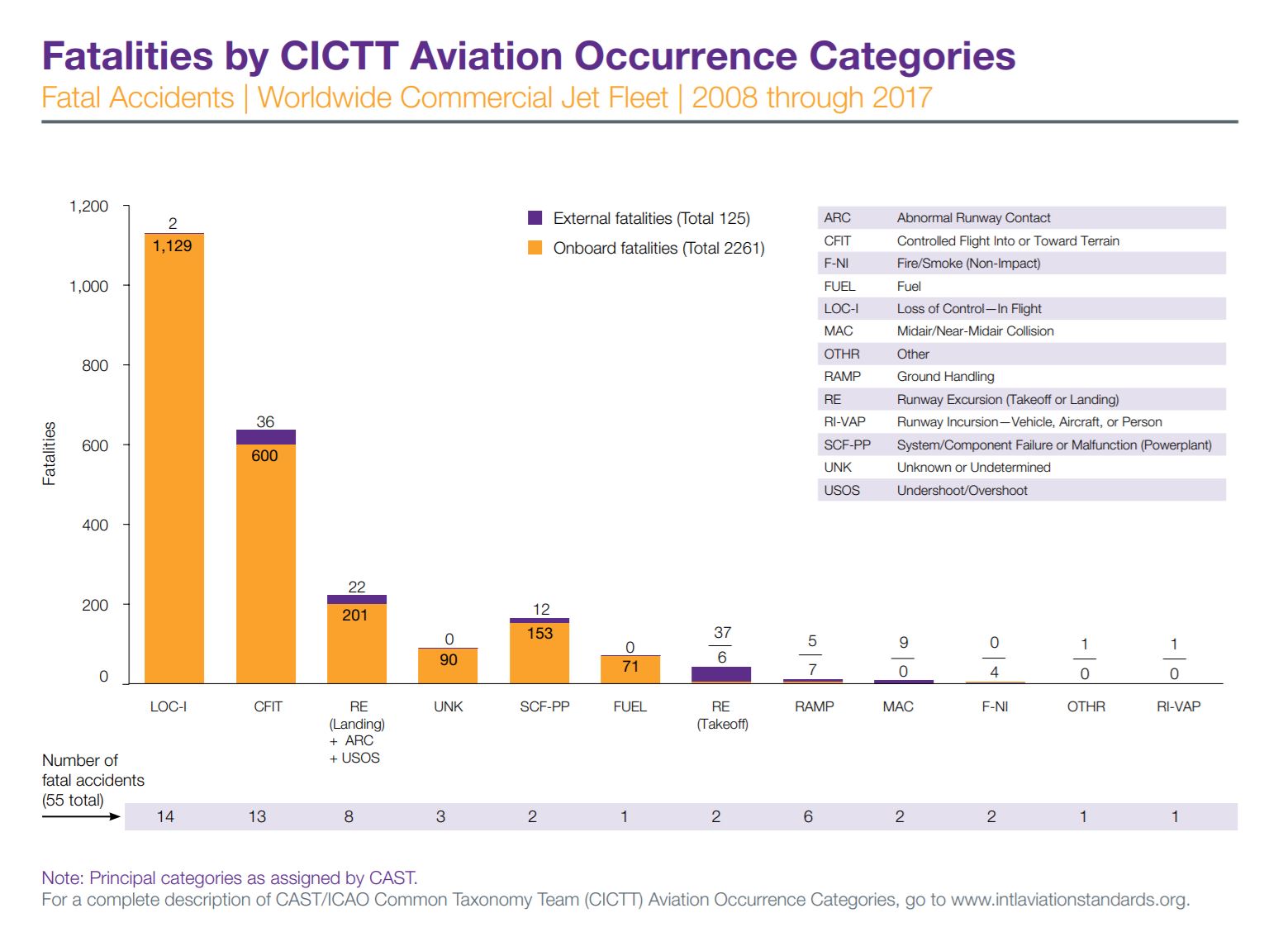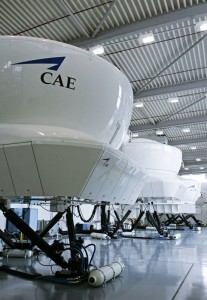The rise of interest in Upset Prevention and Recovery Training (UPRT) presents one of the most rapidly evolving areas in pilot training today. This is due to the growing understanding that Loss of Control In-Flight (LOC-I) is the leading cause of aviation fatalities in both worldwide commercial airline accidents and general aviation. There are three areas where the prominence of UPRT can be seen rising in the last 2-3 years.
 The FAA has included UPRT as a requirement in both the academic and simulator-based training required for the Airline Transport Pilot rating. The International Civil Aviation Organization (ICAO) has published the Manual on Aeroplane Upset Prevention and Recovery Training, and has recommendations for UPRT during commercial pilot licensing and type rating training. Finally, the International Standard for Business Aircraft Operations (ISBAO) has added UPRT to their list of best practices.
The FAA has included UPRT as a requirement in both the academic and simulator-based training required for the Airline Transport Pilot rating. The International Civil Aviation Organization (ICAO) has published the Manual on Aeroplane Upset Prevention and Recovery Training, and has recommendations for UPRT during commercial pilot licensing and type rating training. Finally, the International Standard for Business Aircraft Operations (ISBAO) has added UPRT to their list of best practices.
The LOC-I causal factor is resistant to technological solutions as it is primarily a pilot-centered problem requiring training in areas of both knowledge and skill development. While there are various methods and platforms available for the introduction of academic information, this article will focus on the two primary methods for skill development: using an aircraft or flight simulation training device (FSTD). The FAA and EASA have announced changes to simulator qualification standards that will require improved modeling of stall characteristics. While these changes are beneficial, they will not be able to fully replicate situations that actual aircraft may experience in flight. Because of the dynamic conditions of an unexpected aircraft upset event, the aeromodeling of flight simulators cannot adequately recreate aircraft behaviors. Additionally, actual flight conditions can easily exceed the range of aircraft angle of attack and sideslip that can be safely investigated during flight testing.
 The ICAO Manual on Aeroplane Upset Prevention and Recovery Training puts it this way: “While an essential component of overall flight training and UPRT, current FSTDs have limitations that render them incapable of providing the complete exposure to conditions synonymous with preventing or recovering from a LOC-I event. Limitations in FSTD motion cueing and the reduced emotional response create boundaries that prevent pilots from experiencing the full range of aeroplane attitudes, load factors and behaviour that can be present during an actual flight. These areas of missing experience provide gaps in pilots’ understanding and proficiency when confronted with an actual upset. UPRT on aeroplanes provided by competent instructors should compensate these gaps by being part of the initial UPRT experience at the CPL(A) and MPL level and should then be supplemented by training in FSTDs.”
The ICAO Manual on Aeroplane Upset Prevention and Recovery Training puts it this way: “While an essential component of overall flight training and UPRT, current FSTDs have limitations that render them incapable of providing the complete exposure to conditions synonymous with preventing or recovering from a LOC-I event. Limitations in FSTD motion cueing and the reduced emotional response create boundaries that prevent pilots from experiencing the full range of aeroplane attitudes, load factors and behaviour that can be present during an actual flight. These areas of missing experience provide gaps in pilots’ understanding and proficiency when confronted with an actual upset. UPRT on aeroplanes provided by competent instructors should compensate these gaps by being part of the initial UPRT experience at the CPL(A) and MPL level and should then be supplemented by training in FSTDs.”
This statement introduces the second factor missing from the ability of the FSTD in delivering comprehensive UPRT. The “reduced emotional response” alluded to in the Manual refers to the fact that there are elements of perceived risk and threat of consequence which are simply not present in flight simulation. While this results in the greatest contribution of simulators, safety, it also means that a pilot cannot be fully prepared to deal with the time-critical, life threatening situation presented bu an unanticipated airplane upset through simulation alone.
 This is why ICAO will be recommending UPRT “in actual flight” for all pilots prior to licensing at the Commercial level. As the Manual states: “This on-aeroplane training, when given at the CPL(A) or MPL licensing level, provides physiological and psychological exposure geared toward upset prevention and recovery which creates a frame of reference that can be transferred to the FSTD environment later in their training. The practice and application of skills acquired during on-aeroplane UPRT provides experience and confidence that cannot be fully acquired in the simulated environment alone. Although not specifically addressed, when the two platforms are combined, the depth of coverage of the on-aeroplane UPRT elements… can in some instances be enhanced by the integrated use of a suitable FSTD to complement the training exercises conducted on the aeroplane.”
This is why ICAO will be recommending UPRT “in actual flight” for all pilots prior to licensing at the Commercial level. As the Manual states: “This on-aeroplane training, when given at the CPL(A) or MPL licensing level, provides physiological and psychological exposure geared toward upset prevention and recovery which creates a frame of reference that can be transferred to the FSTD environment later in their training. The practice and application of skills acquired during on-aeroplane UPRT provides experience and confidence that cannot be fully acquired in the simulated environment alone. Although not specifically addressed, when the two platforms are combined, the depth of coverage of the on-aeroplane UPRT elements… can in some instances be enhanced by the integrated use of a suitable FSTD to complement the training exercises conducted on the aeroplane.”
The last sentence sums it up. The most comprehensive UPRT is delivered neither in an airplane or a simulator, but in an integrated fashion utilizing the best characteristics of both. This is the approach taken by APS in our Integrated UPRT Courses.




Comments: